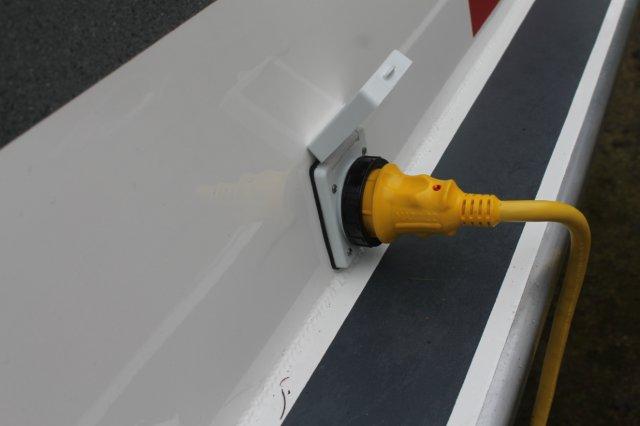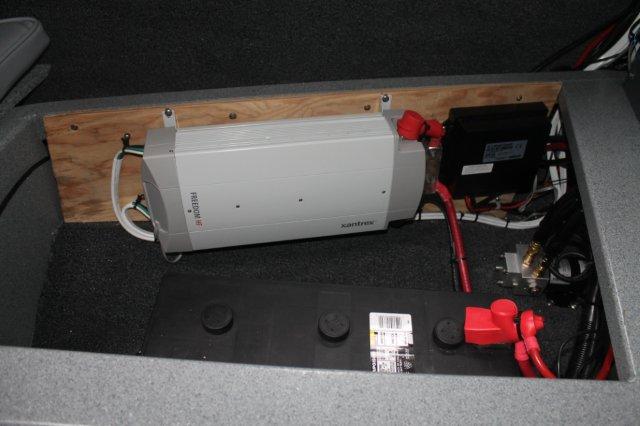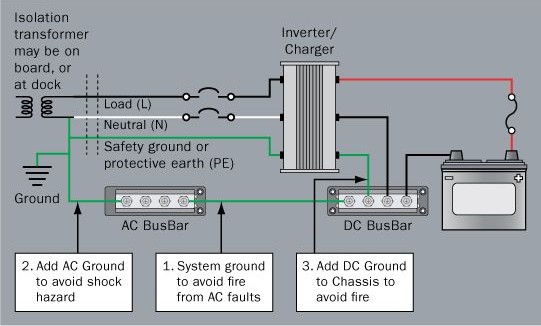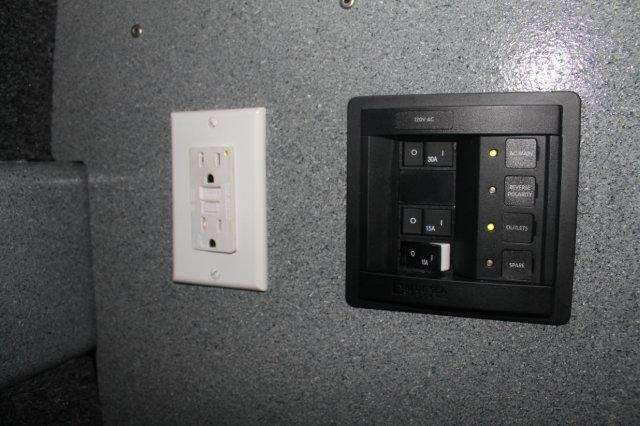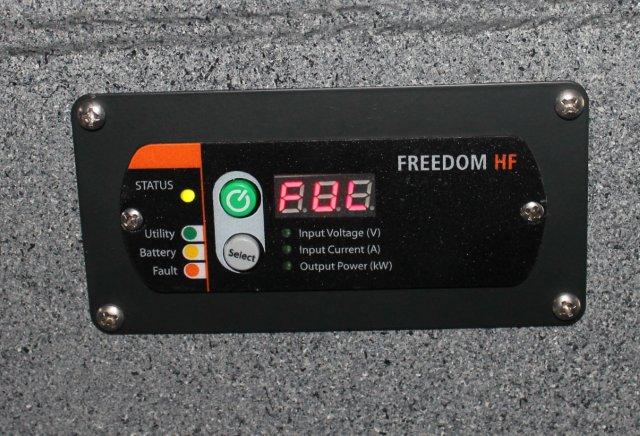“Inverting” My On-Board Electrical Thinking. Leave a reply
When you get right down to it, there are only a couple things you can absolutely control on your boat: One, the amount of fuel you have on board and two, the health of your batteries.
For the former, I’m a habitual tank “topper”…for the latter, I’ve always been a big proponent of on-board battery chargers. I mean heck, what can be easier than pulling into the driveway, climbing into your boat with an extension cord and plugging in your built-in battery charger? After a talk with my friend Lauren Bivins at Harbor Marine, I learned exactly what is easier and makes your boat’s electrical system more versatile too!
For starters, how about a dedicated weather-resistant 30 amp shorepower connection installed on your boat…
…and, instead of installing on-board battery chargers for all your battery banks, how about a single Inverter/Charger?
An inverter converts the 12V DC energy stored in your batteries into household 115V AC electricity to run standard business and household appliances when shore power is not available. Ok, this is where I have to admit that the Koureg coffee maker that I got for Christmas is one big, hot, steamy reason behind all this but keeping bait frozen in a portable freezer, warming a sandwich in a small microwave, charging camera batteries, cell phones, rechargeable flashlights/spotlights are several other great reasons to have 115V AC power on board.
Inverter/chargers have outputs that include a powerful battery charger, associated battery monitors and remote controls. Inverter/chargers almost always include an automatic transfer switch, so that when your inverter/charger detects another source of AC power (because you plugged into shore power) the inverter/charger shifts gears from inverting to charging batteries. If the outside source of AC goes away, it automatically switches back from battery charger to inverter. Inverter/chargers become an integral part of your boat’s electrical system and can rapidly replenish battery banks.
Here’s a simplified Inverter/Charger schematic. Keep in mind that several batteries can be charged by a single I/C unit!
The bottom line is the tremendous handiness of having a couple of AC outlets on board and a simple, small panel locked up securely inside the cabin.
Not to mention having an on-board monitor which constantly displays my batteries state of charge. If you look close you can see “FUL” on the display, indicating a “FULL” state of charge which is a very good thing!
When you consider that all of your boat’s vital functions are completely controlled and governed by your electrical system, it really pays to add to your boats electrical capacity. If you think about it, we use more electricity on board now than ever before. Large electronics displays, defrost fans, electric downriggers, stereos, lighting and marine VHF radios add up to an amp draw that your kicker motor’s 4 amps doesn’t have a prayer of keeping pace with.
Adding an Inverter/Charger to your boat’s electrical system is a great way to stay in front of your boat’s growing electrical demand and will make your boat more comfortable in the process. Go see my friends at Harbor Marine at the Seattle Boat Show and you’ll see what I mean!
Hot coffee anyone???
Tom Nelson
The Outdoor Line
710 ESPN Seattle
www.theoutdoorline.com


